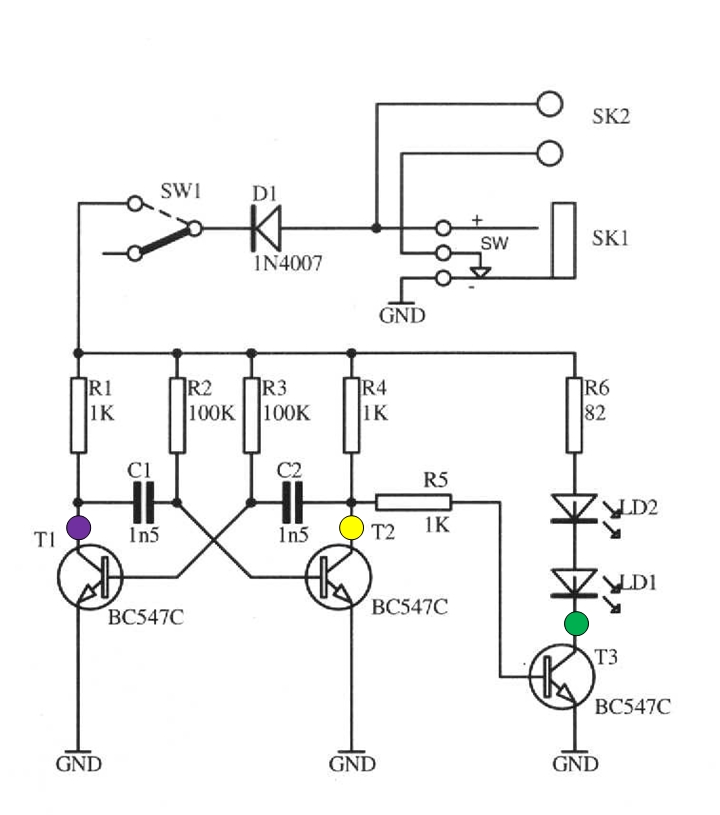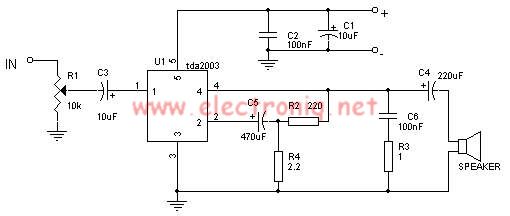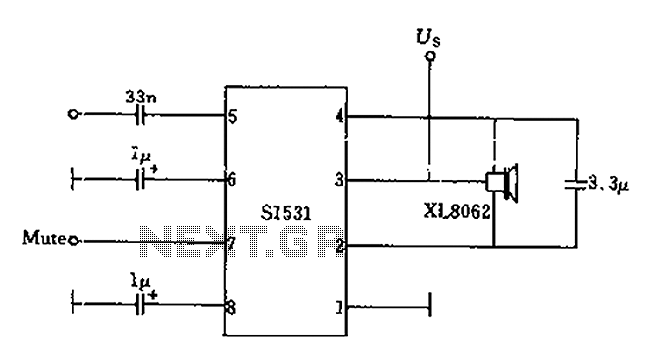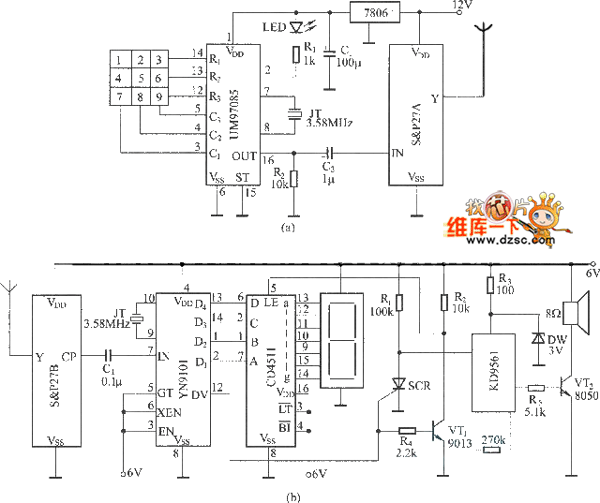
Thyristor AC torque motor speed control circuit 2
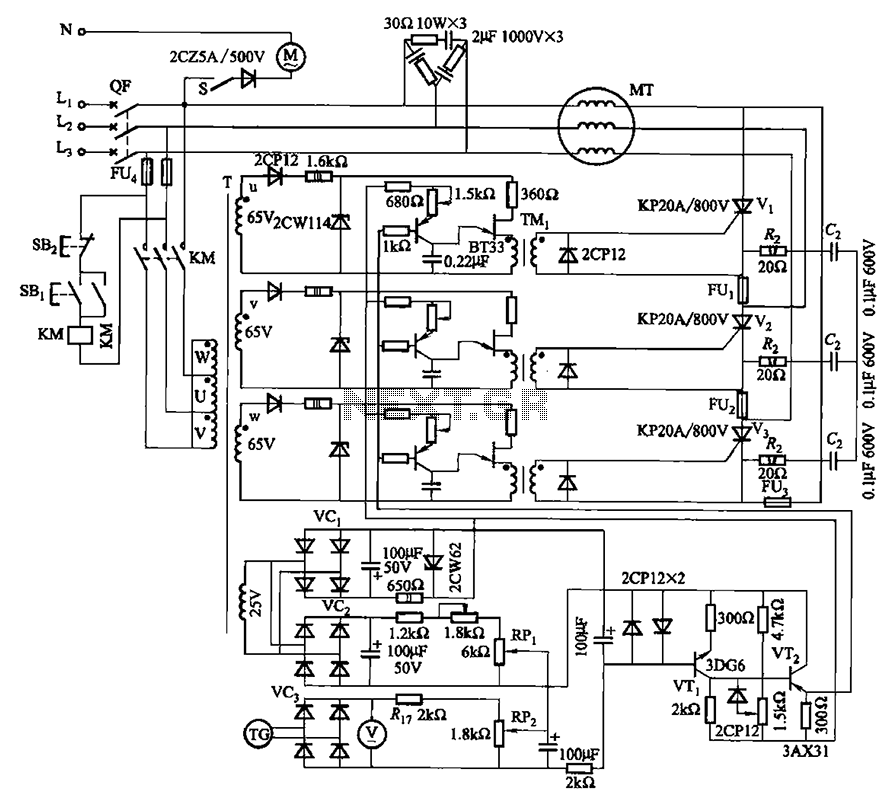
The circuit depicted in Figure 3-181 comprises three thyristors, labeled V1 to V3. The trigger circuit utilizes a single-junction transistor relaxation oscillator. The speed control circuit incorporates negative feedback. A master adjust potentiometer, designated as RPi, is used to modify the torque of the motor speed.
The circuit operates by utilizing the three thyristors (V1, V2, and V3) to control the power delivered to a motor. Thyristors are semiconductor devices that function as switches, allowing current to flow when triggered by a gate signal. In this configuration, they are arranged to manage the motor's speed effectively.
The single-junction transistor relaxation oscillator serves as the triggering mechanism for the thyristors. This oscillator generates a periodic signal, which is crucial for initiating the conduction of the thyristors. The frequency and duty cycle of this signal can be adjusted based on the desired motor speed.
Incorporating negative feedback in the speed control circuit allows for improved stability and accuracy in maintaining the motor's speed. This feedback mechanism continuously monitors the motor's performance and adjusts the triggering signal accordingly, ensuring that any variations in speed are corrected in real-time.
The master adjust potentiometer (RPi) plays a critical role in fine-tuning the system. By varying the resistance, the potentiometer alters the voltage level at the input of the trigger circuit, which in turn modifies the firing angle of the thyristors. This adjustment allows for precise control over the torque output of the motor, enabling it to respond effectively to varying load conditions.
Overall, this circuit design is well-suited for applications requiring adjustable motor speed and torque control, leveraging the advantages of thyristors and feedback mechanisms for enhanced performance. Circuit shown in Figure 3-181. Main circuit consists of three thyristor Vi-V3 components. Trigger circuit single-junction transistor relaxation oscillator. Speed circuit has ne gative feedback. Master adjust potentiometer RPi, can change the torque of the motor speed.
The circuit operates by utilizing the three thyristors (V1, V2, and V3) to control the power delivered to a motor. Thyristors are semiconductor devices that function as switches, allowing current to flow when triggered by a gate signal. In this configuration, they are arranged to manage the motor's speed effectively.
The single-junction transistor relaxation oscillator serves as the triggering mechanism for the thyristors. This oscillator generates a periodic signal, which is crucial for initiating the conduction of the thyristors. The frequency and duty cycle of this signal can be adjusted based on the desired motor speed.
Incorporating negative feedback in the speed control circuit allows for improved stability and accuracy in maintaining the motor's speed. This feedback mechanism continuously monitors the motor's performance and adjusts the triggering signal accordingly, ensuring that any variations in speed are corrected in real-time.
The master adjust potentiometer (RPi) plays a critical role in fine-tuning the system. By varying the resistance, the potentiometer alters the voltage level at the input of the trigger circuit, which in turn modifies the firing angle of the thyristors. This adjustment allows for precise control over the torque output of the motor, enabling it to respond effectively to varying load conditions.
Overall, this circuit design is well-suited for applications requiring adjustable motor speed and torque control, leveraging the advantages of thyristors and feedback mechanisms for enhanced performance. Circuit shown in Figure 3-181. Main circuit consists of three thyristor Vi-V3 components. Trigger circuit single-junction transistor relaxation oscillator. Speed circuit has ne gative feedback. Master adjust potentiometer RPi, can change the torque of the motor speed.
